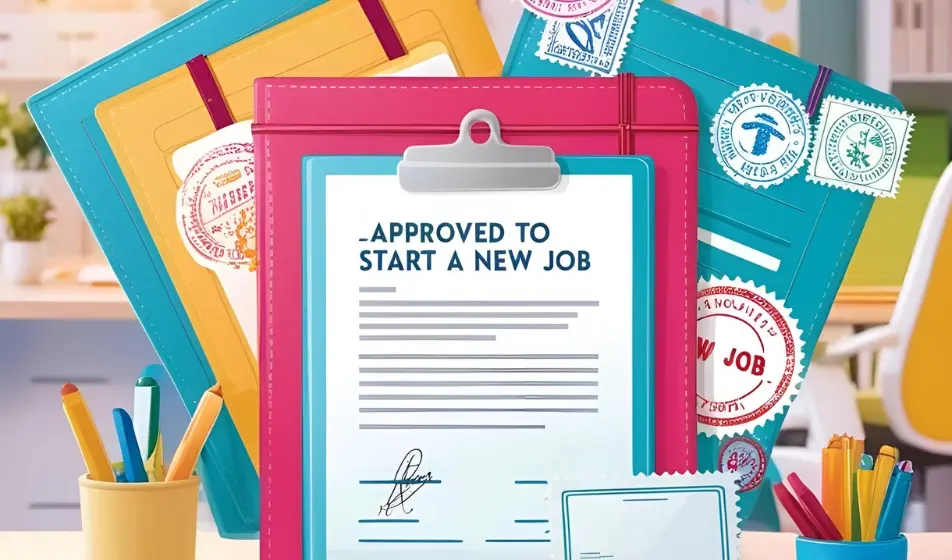If an employee decides to leave the business, they may ask you for a reference letter to give their potential employer an insight into the employee’s background and capabilities.
Although it will be sad to see them go, this is your chance to maintain a good working relationship with an employee who’s leaving and demonstrate your organisation’s professionalism to the wider working community.
A reference letter can be many things: brief, detailed and, in some cases, even negative. It’s essential for employers to understand the importance of writing reference letters for their own employees, so sit back and let us walk you through how to produce the perfect reference letter, and explain why they matter...
What is a reference letter and why are they needed?
Why write a recommendation letter?
What’s the difference between professional and personal letters of recommendation?
What should I include in an employee reference letter?
Employment reference letter template
Breathe new life into your recruitment
What is a reference letter and why are they needed?
A reference letter from an employer is usually a show of support for an employee who is leaving for a new job. It could be because they want a fresh start, need to relocate, or all sorts of changes to personal circumstances.
These letters can be as long or as short as you see fit and, contrary to popular belief, can contain what might be perceived as negative comments. The main requirements when writing a reference letter are that it is fair, balanced and detailed. Whether for positive or negative statements, it’s vital you ensure everything you write about the ex-employee can be backed up with evidence.
Why write a recommendation letter?
An employee who’s leaving will often ask you for a reference letter so that their job hunting is strengthened through your recommendation and any claims stated in their hiring process can be backed up.
Fundamentally, a reference letter acts as a way for an experienced professional to appraise the qualities and skills of their employee who’s leaving, helping any future employer make the correct call when hiring.
What’s the difference between professional and personal letters of recommendation?
There are two types of recommendations you’ll most likely be asked to write: personal and professional reference letters. Out of the two, employers will most likely be asked to write a professional reference.
Professional reference letter
A professional reference letter will take into account how an employee performs in the workplace. It will take into account their experience and knowledge, how they conduct themselves and if they are a team player. In short, it is an overview for the future employer that helps them understand how their new recruit may fit into the role.
Personal reference letter
Unlike a professional reference letter, which discusses the employees experience and ability, a personal reference letter focuses purely on their character.
It should discuss how ethically the recruit in question has behaved over their employment and how they interact with other members of staff. This should give any future employer an insight into how a new recruit may fit into their company culture.
As an employer you may be asked for just one of these, or both. In the latter case, you can provide two separate letters, or combine them with one another into two clearly labelled sections.
Things to consider before you start writing a reference letter
Before you start writing a reference letter for an employee, you should consider the following:
How long should my reference letter be?
Essentially, how much detail do you feel you need to include about your old recruit? There is no ‘correct’ length. If you have a lot of great things to say about the employee who’s leaving, don’t hesitate to include it in the reference letter.
However, be wary of making it too long. Every day managers and HR departments get given a raft of employee reference letters and may not have the time to read through an essay entitled ‘Why you should hire...’
Instead, make sure all the important details are mentioned early on, keep the letter under two pages and cut out all the jargon. This way, even if the reader doesn’t have the time to read through the whole thing, they can still have a strong idea of why they should hire that employee.
Remember, this is a great opportunity to highlight the benefits your employee will bring to their new employer, while also keeping your relationship with the employee strong going forward.
How to address an employee reference letter
Sometimes the hardest part about writing a reference letter is knowing how to start. Thinking about the correct way to address someone can leave many people stuck on ‘To…’ for hours.
If you’re unsure of the best way to address the employer, try this instead:
To whom it may concern.
it's always best to err on the side of formality when it comes to recruitment, and this simple address can quickly solve the problem of starting your reference letter.
In fact, a reference letter doesn’t need to be specific to an organisation or person within the business. By using this opening as a template you can use the letter as a starting point for when any employee decides to move on.
What should I include in an employee reference letter?
Before writing your reference letter, plan out what you want it to include. Think about the information you would want to know when taking on a new recruit.
- Previous job title: This way the new employer can check if the recruit has been misleading in their description of themselves.
- Salary history: Quick promotions and many increases can demonstrate an employee with a strong desire to succeed. This doesn’t even need to include figures - just a note to indicate they received an increase.
- Dates of employment with your business: Include a start date, promotion dates, and a leaving date. This can be used to evaluate the employee’s experience for the role.
- Their job performance: All future employers want to know how the potential new recruit delivered in their previous role.
- Previous role responsibilities:This could inform the recruiter of potential management material going forward.
- Employee conduct: How they interacted with employees and those senior to them. This will be important when hiring for company culture.
- Whether they resigned or you dismissed them: Some employees may omit mentioning this when interviewing.This is important information for the future employer.
Employment reference letter template
Still unsure about how best to structure your employee reference letter? Simply apply everything you’ve learned in this article so farand apply it to our useful reference letter template below.
Dear [Recipient’s name] / [To whom, it may concern.]
I am writing to you to offer my professional recommendation for [name] for the [job title] role at [organisation].
As [writer's job title] I worked with [name] as their [workplace relation e.g. manager] when they were employed as [employees job title and time working at the organisation] . During the time I worked with them, I found they were [include beneficial attributes e.g. reliable, hardworking, enthusiastic]. I strongly endorse them for this role.
I was routinely impressed with [include information about how the candidate performed in the role] and how they [include information about they interacted with their coworkers]
Over time [name] developed [include examples of how the employee developed in the organisation].
Specifically, these achievements are best seen in [include specific examples of employee achievement such as promotion or awards won]
[name] is a delight to work with and I wouldn’t hesitate to hire [him/her/them] again.
Should you have any further questions about [him/her/them], feel free to reach me at [phone number].
Sincerely,
[Your name]
[Contact information]
Remember, this reference letter for an employee who’s leaving is just a template and can be edited to best fit your needs. If you feel it needs to be longer, expand on the benefits or achievements of the employee. If there isn't much to write, be brief and just include the essential information.
Breathe new life into your recruitment
Whether you’re taking on a new recruit or saying goodbye to a loyal employee, Breathe’s HR software allows you to track your recruitment process through the entire journey, all while safely storing all your HR documents in one secure place.
It’s the ideal solution for small businesses to manage, develop, and retain talent.
Author: Andy Stewart




